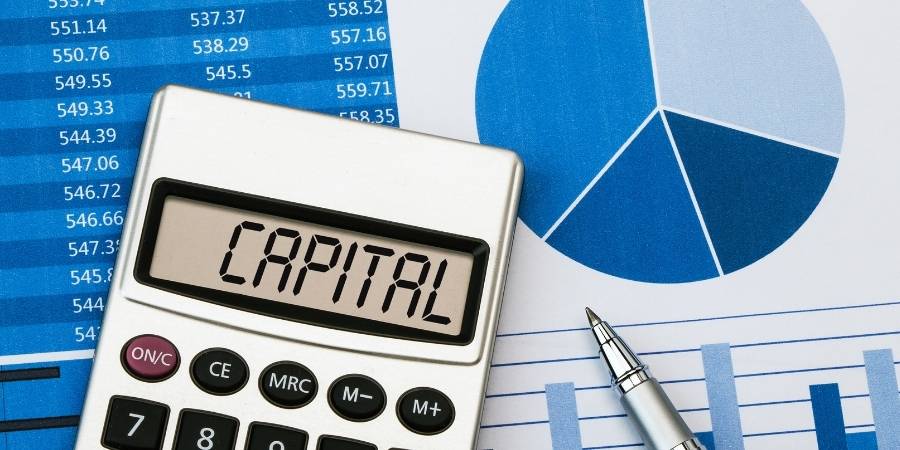Capital is a term with many meanings in economics, accounting and finance. One definition of capital is “any resource that can be used to generate future income.” Another definition of capital is “wealth”.
It will help provide a better understanding of cost (capital), which are assets used to produce future net income. For example, it includes the depreciation rate on machinery and equipment, plant and machinery structures, buildings, land improvements made prior to the start of operations. Here is how to calculate capital.
1. Obtain Your Company’s Financial Statements
The first step is to find out the assets and liabilities of your company.

2. Calculate Your Cost of Capital
This calculation is based on the historical cost, which was calculated using the net present value (NPV) or discounted cash flow method. This is a calculation method that looks at the cash flows, both positive and negative, that will be generated to reflect today’s value. Depreciation expenses treated as operating expenses are not included in this calculation.
There are two ways to calculate your cost of capital.
Method 1: use net book value (NBV) as capital
Convert historical costs to replacement costs, and take the ratio of net book value capital needs for replacement costs for each type of asset. Then calculate the ratio of the remaining assets to total assets, which gives you a ratio showing how much current market value is below the historical cost (NBV) (a negative ratio means the market value is below historical cost). In this way, you get an idea of how much capital is needed to replace these assets.
Method 2: NBV minus depreciation in current operation
In this method, the cost of capital equals net book value plus depreciation.
3. Calculate the Rate of Return on Capital
You can calculate the rate of return on capital with the following equation: Rate of Return Capital = Net Income divided by Capital. Divide the net income by the capital.
The return on capital will give a better idea of how your capital can be used to increase your return in the future. If you have a small initial investment but a large increase in net income, you have possibilities of increasing the return on capital. This is also called leverage. You can also use this method to calculate the return on investment.
Another way of calculating the cost of capital is using the simple cost of capital formula (Cost = RATE” CAPITAL*(1+D/t). It is a method that says that the return on capital equals the historical cost of funds, which will give you an idea if the cost of capital will be greater than your expected income.

4. Calculate the Depreciation Rate Used for Calculating Capital
Depreciation rate is calculated as follows:
Depreciation Rate = ((Total Asset – Salvage Value) / Total Asset).
The depreciation rate can be divided into two types: straight line (SL) and declining balance (DB). In this way, you can calculate the capital amounts of each type of asset.
Depreciation rate = Straight-line method / Declining Balance Method
These two methods will be used to calculate depreciation expense and income tax expense. On the other hand, the depreciation method is not only used to calculate capital, but also to estimate future taxes.
SL: Depreciation Rate = Total Asset Initial Value / Total Asset Current Value
DB: Depreciation Rate = N (Initial Value + 1.5) / N+1 (Current Value + 1.5)
5. Calculate Your Total Asset
Calculate your assets by adding together the historical cost and current value of each type of assets. This calculation is based on the historical cost calculated using accounting rules.
6. What is Depreciable Capital?
In general, there are three types of depreciable capital: tangible fixed assets; intangible fixed assets; inventory and raw materials.
7. Calculate the Depreciation Amounts
Depreciation amount = Depreciable Capital Total Asset * Depreciation Rate. The depreciation amount comes from the cost of capital, and is a way to address the initial investment in capital. The higher the depreciation, the greater your income tax savings, but there will be a lower tax deduction in net income. If you have more fixed assets, you need to depreciate more capital, which will give you a higher income tax savings.

8. Calculate Current Value of Depreciable Assets
Depreciable assets = Depreciable Capital Total Assets * Current Value / Original Value.
*The current value of depreciable capital can be used to replace the historical cost of capital.
9. Calculate Gross Income
Gross Income = Net Income + Depreciation Amount
10. How to Identify Capital Consumption?
There are two different ways to calculate capital consumption: Fixed Asset Depreciation Method and Depletion Method for Oil and Natural Gas Companies.
11. How to Calculate the Depreciation Expense?
Depreciation Expense = Depreciable Capital Depletion Rate * Depletion Amount.
The deprecation amount comes from the depreciation rate, which comes from the cost of capital, and is a way to address the initial investment in capital. The higher the depreciation amount, the greater your income tax savings, but there will be a lower tax deduction.

